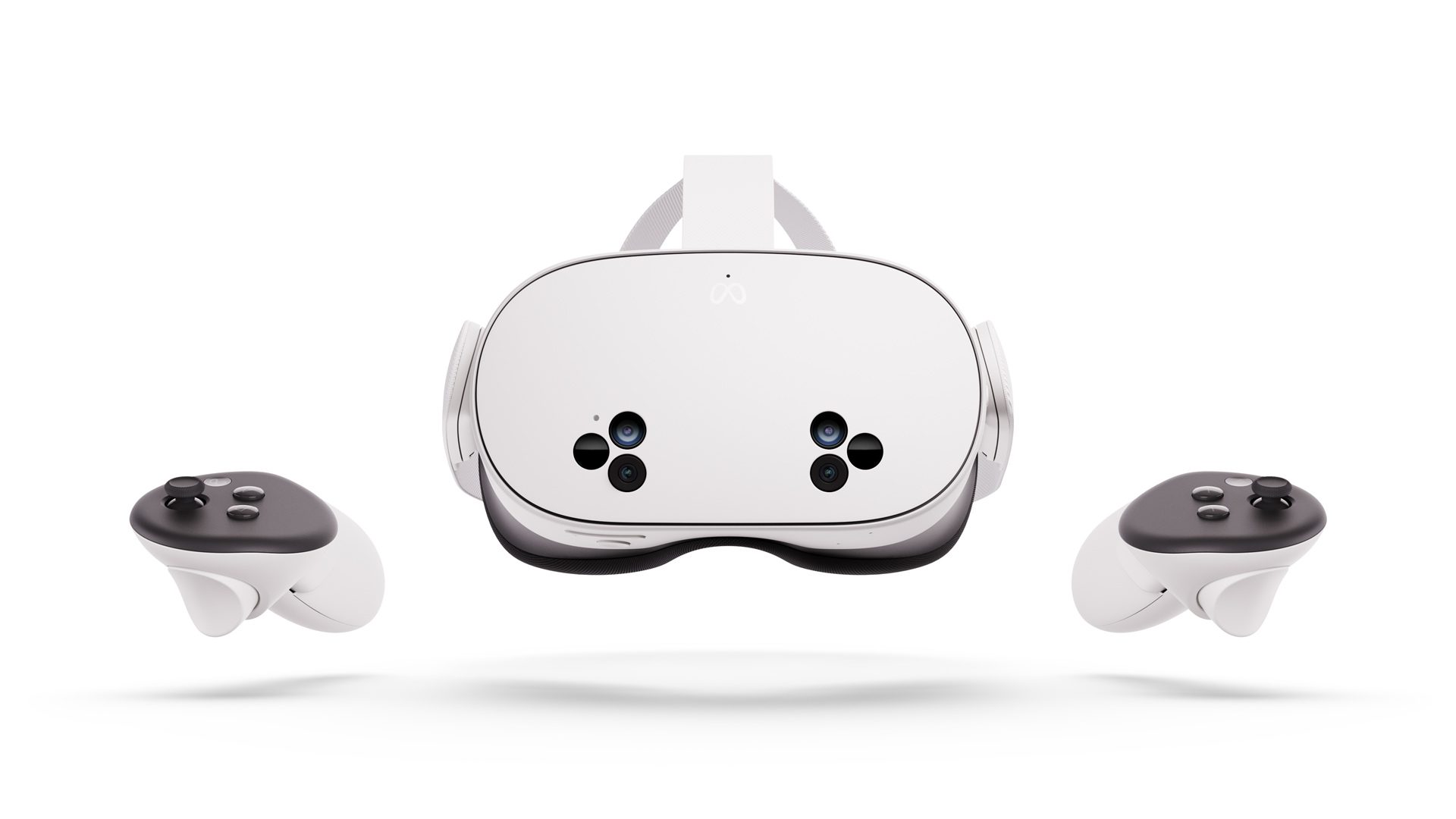On stage at Meta Connect today, CEO Mark Zuckerberg officially unveiled Quest 3S, Meta’s next headset, which aims to appeal to first-timers as well as Quest and Quest 2 owners looking for their first mixed reality device.
As previous leaks suggested, Meta is releasing two variants of Quest 3S, a 128GB model priced at $300 and a 256GB model for $400, launching on October 15th.
You’ll be able to buy direct from Meta alongside the usual retail partners, which in the US includes Amazon, Best Buy, Target and Walmart. Here’s the pricing breakdown by various regions and their respective retailers:

Like Quest 3, Quest 3S packs in full-color mixed reality and is powered by the same Snapdragon XR2 Gen 2 chipset.
The only substantial difference between the two is the inclusion of Fresnel lenses and a slightly narrower field of view since it serves up the same visuals as Quest 2, with its 96-degree horizonal FOV and 1,832 × 1,920 per-eye display resolution.
You can check out the full spec sheet below, although the short of it: Quest 3S delivers Quest 3 horsepower with Quest 2 visuals, and at a price that’s designed to appeal to those previously hesitant to plonk down $500 on Quest 3.

The inclusion of Fresnel lenses—and not Quest 3’s slimmer and lighter pancake lenses—means its also a little bulkier than Quest 3.
Notably, Meta says it’s “20 percent slimmer” than Quest 2 when measured without facial interfaces. Weighing in at 514g, surprisingly Quest 3S is also 1g lighter than its older sibling, Quest 3.

As you’d imagine, Quest 3S can also play all of the same games as Quest 3, including the full back catalog of Quest games as well as Quest 3 mixed reality games and upcoming exclusives, such as Camouflaj’s Batman: Arkham Shadow, which is being bundled with all new Quest purchases through April 2025 along with three months of its games subscription service Meta Quest+.
What’s more, Quest 3S even works with a bulk of Quest 3 accessories, including the Elite Strap, Elite Strap with Battery, Quest 3 Carrying Case and Compact Carrying Case, the Link cable, Quest 3 Touch Plus controller, Charging Dock, and Active Straps.

The only accessories not shared between the two models is facial interfaces, which now include newly announced Quest 3S-exclusive Breathable Facial Interface and Quest 3-exclusive open-periphery facial interface. This means you can probably look forward to a bunch of third-party accessories working on Quest 3S, but just not facial interfaces.
To make way for Quest 3S, the company is dropping a few models from its lineup and lowering prices on a few models. Quest 2 and Quest Pro are being phased out along with the 256GB version of the original Quest 3, pricing it at a barnburner sale of $430. The 512GB version of Quest 3 is also being slashed from the original launch price of $650 to $500.
Quest 3S Specs |
|
Visuals |
|
| Display | 1 × LCD |
| Resolution (per-eye) | 1,832 × 1,920 (3.5MP) |
| Pixels Per-degree | 20 PPD |
| Maximum Refresh Rate | 120Hz |
| Optics | Fresnel |
| Field-of-view | 96ºH × 90ºV |
| Pass-through view | Color (18 PPD) |
| Optical Adjustments | Stepped IPD eye-relief (via included spacer) |
| IPD Adjustment Range | 58 mm, 63mm, 68mm |
Performance & IO |
|
| Processor | Snapdragon XR2 Gen 2 |
| RAM | 8GB |
| Storage | 128GB, 256GB |
| Connectivity | unknown (likely Wi-Fi 6E, Bluetooth) |
| Connectors | USB-C |
| Input | Touch Plus (AA battery 1×) hand-tracking, voice |
| Audio | In-headstrap speakers |
| Microphone | Yes |
| Battery | 2.5 hours (4,324 mAh) |
| Weight | 514 grams |
Sensing |
|
| Headset-tracking | Inside-out (no external beacons) |
| Controller-tracking | Headset-tracked (headset line-of-sight needed) |
| Eye-tracking | No |
| Expression-tracking | No |
| On-board cameras | 2 × RGB, 4 × IR 2 × IR flood LED |
| Depth-sensor | No |
Price |
|
| MSRP | $300 (128GB), $400 (256GB) |







